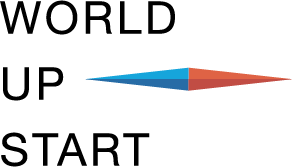From Patents to Partnerships: Intellectual Property Tactics for MedTech and Life Sciences Growth in the U.S.
For over three years, WorldUpstart has been at the forefront of assisting BioSciences and MedTech companies from around the globe in successfully entering the U.S. market. With our focused expertise and extensive network, we have helped numerous firms navigate the complexities of market entry, bringing the right tools and knowledge to ensure success. This blog post draws on the deep expertise of Christopher Halliday from DLA Piper, our leading expert in IP protection and strategy, to provide invaluable insights for companies looking to secure their intellectual property while expanding into the U.S. market.
Entering the U.S. market presents a formidable, yet rewarding, opportunity for Life Sciences and MedTech companies from abroad. The size and complexity of the U.S. market, coupled with stringent legal and regulatory frameworks, demands a robust and complementary intellectual property (IP) strategy. Here’s why prioritizing IP management is not just beneficial but essential for companies looking to make their mark in the highly competitive U.S. healthcare sector.
Investors are keenly interested in the details of your IP. They want to know who is attached to the IP, the completeness of formal assignments, and the clarity of the chain of title. The fundamental question must be answered: “Do you truly own what you claim to own?” This concern underscores the necessity for thorough documentation and legal clarity, which reassures investors and partners of the legitimacy and security of their investments. Companies must confirm that all IP rights are properly assigned and that these rights are free from potential ownership disputes, which can otherwise lead to entanglements that devalue the investment. The reality of patent ownership in the U.S. follows a simple yet profound rule: ownership is generally tied to inventorship unless explicitly reassigned through legal agreements. When dealing with joint developments, navigating joint IP ownership arrangements while maintaining trade secrets requires clear agreements outlining each party's rights and responsibilities. This ensures that all entities involved understand their roles and the extent of their claims to any jointly developed IP.
Moreover, understanding the boundaries of IP—including patents, copyrights, and trade secrets—is crucial. Each type of IP protection has its nuances, and knowing how to leverage each type can protect different aspects of technology and business processes. For instance, patents protect inventions and new processes, while trade secrets can secure proprietary knowledge from competitors, provided it is not disclosed publicly. Companies need to keep one eye on the regulatory approval process and the other eye on IP protection to make sure changes in one area do not commercially impact the other. For example, a surprise to be avoided is obtaining marketing approval for a product or method that is not encompassed by any IP that controlled by or licensed to the Company.
Structuring IP strategically is also essential to detect and address infringement effectively. Knowing who might infringe upon Company IP and preparing in advance can help enforce rights more swiftly and effectively. This involves designing and patenting products and processes in ways that make infringement detectable and, consequently, prosecutable. Proper IP structuring protects the company and acts as a deterrent against potential infringers.
In conclusion, as MedTech and Life Sciences companies plan their entry into the U.S. market, they must cultivate a sophisticated understanding of IP management. This involves more than just securing patents; it requires a strategic approach to IP ownership, meticulous documentation, and proactive management of relationships concerning IP rights. With a robust IP strategy, companies can secure the confidence of investors, deter infringement, and establish a strong foothold in the U.S. market, setting the stage for long-term success and innovation.

